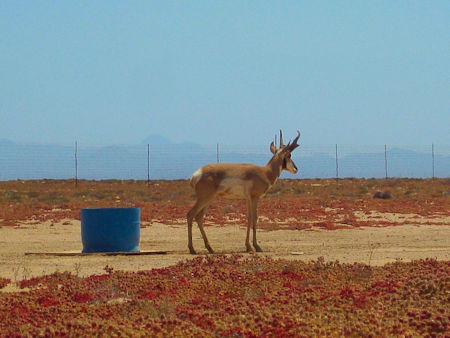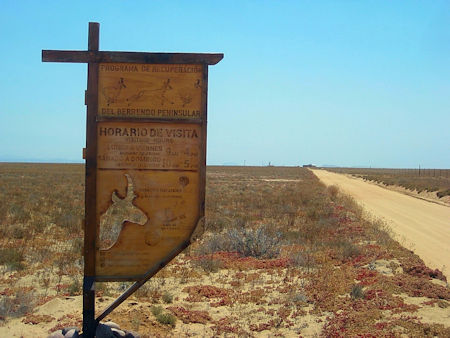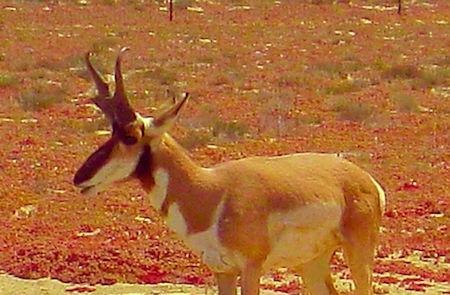 |  |
By David Kier

The Peninsular Pronghorn or Baja California Pronghorn (Antilocapra americana peninsularis) is the second fastest land animal on the planet, exceeding 50 miles-per-hour! Only a cheetah can beat a pronghorn for speed; however, the pronghorn can keep up the speed for a longer time than a Cheetah.
In Spanish, the animal is called a Berrendo and the desert plain east of Guerrero Negro is the Llano del Berrendo. They once were seen all over central Baja California; however, today they are an endangered species.
While they may be confused with antelopes, the pronghorn is a unique species native to North America. The horns have characteristics with antlers in that they have multiple points and shed annually but are made of keratin, not bone as are antlers. In North America, there are five subspecies of pronghorn: Wyoming pronghorn, Oregon pronghorn, Mexican pronghorn, Peninsular pronghorn, and Sonoran pronghorn. Only Baja California’s Peninsular pronghorns are at critical risk for extinction with about 200 in the wild.
Arthur North, who traveled the entire peninsula on a burro 111 years ago, wrote much about the Berrendo in his 1910 book, Camp and Camino in Lower California. One chapter of North’s book is even titled “Into the Antelope Country.” Even with so much fascination with the pronghorn, he saw very few of them. Shooting a pronghorn buck for food proved both difficult and emotional for North. He writes, “His great, frightened, gazelle eyes looked up to me with so pathetic and reproachful an expression that I would gladly have given him back his life had such power been mine.”

In 1786, Padre Francisco Javier Clavigero completed his book, The History of (Lower) California, in which he mentions the antelopes (calling them gamuzas). Padre Clavigero tells us that they were called ammogokió by the Indians. He continues with descriptions that also match bighorn sheep and says there are “black ones” and “white ones”. Arthur North questioned Clavigero’s descriptions. Perhaps the two species were being confused or combined?
Two and a half miles north of the giant Eagle Monument, near Guerrero Negro, a dirt road goes east a short distance to the Peninsular Pronghorn reserve and breeding center. The observation room and museum are not yet open to the public (June, 2017). However, you may be rewarded with a walking encounter to see, up-close, these wild, antelope-like animals.
The director of the project is Ana Isabel Razo Zaragoza. She and two members of her staff provided the walking tour out to where a few wild machos (breeding male pronghorns) were near the pens that protected the females and babies. The tour was in Spanish, but would still be interesting even with a language barrier.
To locate the Pronghorn reserve, see the road going east from Highway 1 at Km. 123. Signs are at the junction, as well. Go east 1.6 miles, a gate may need to be opened before reaching the facility. Park near the buildings where staff members will greet you. A visit to see these magnificent animals will surely be a memorable addition to your Baja California travels.

For more information about Pronghorns:
Berrendo Website
Berrendo Facebook
San Diego Zoo
About David
David Kier is a veteran Baja traveler, author of 'Baja California - Land Of Missions' and co-author of 'The Old Missions of Baja and Alta California 1697-1834'. Visit the Old Missions website.